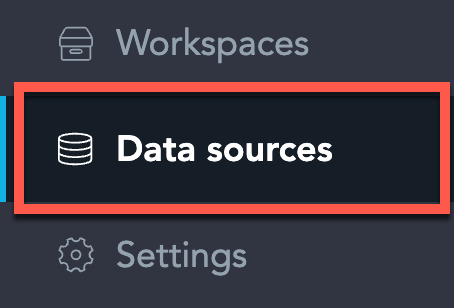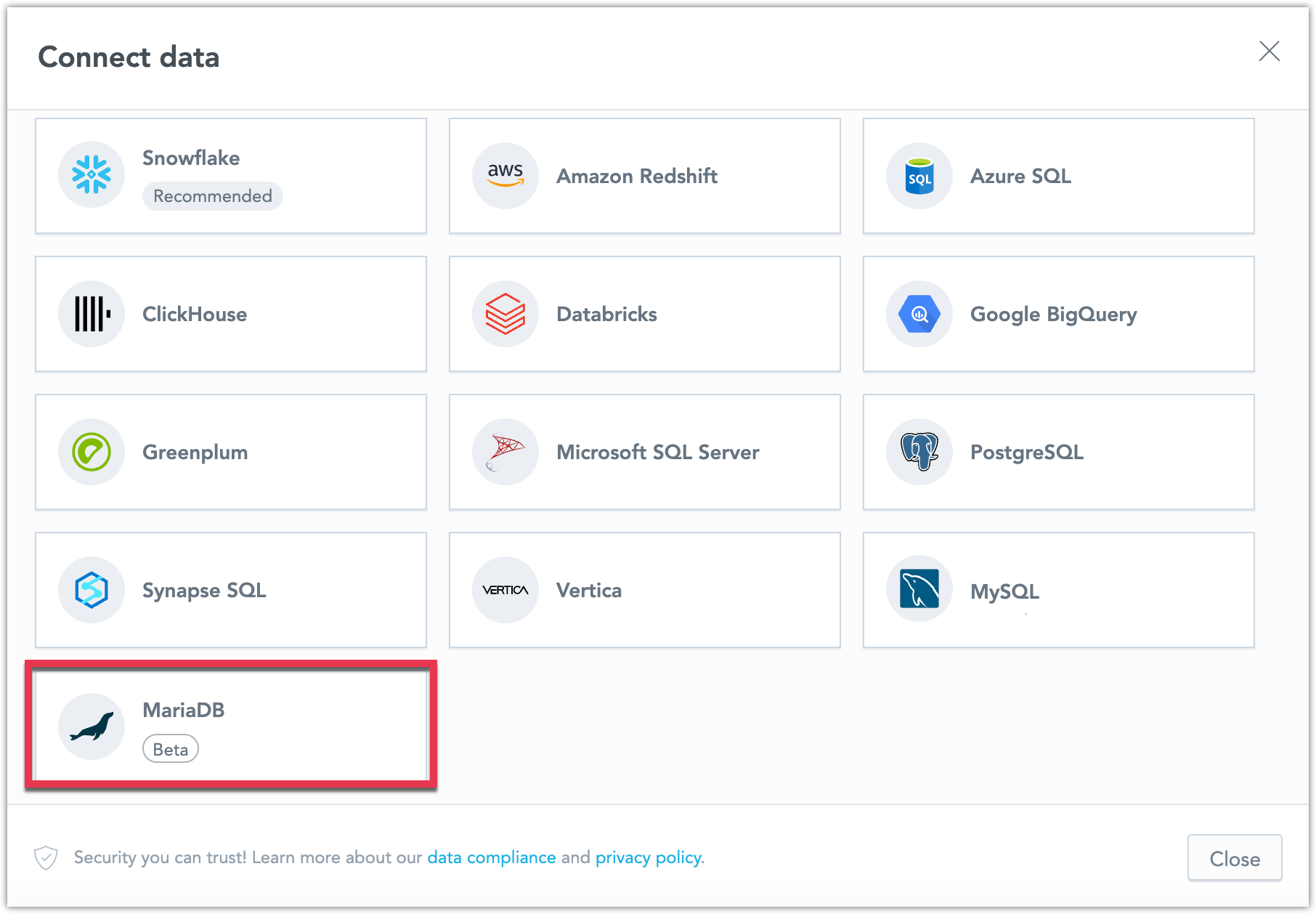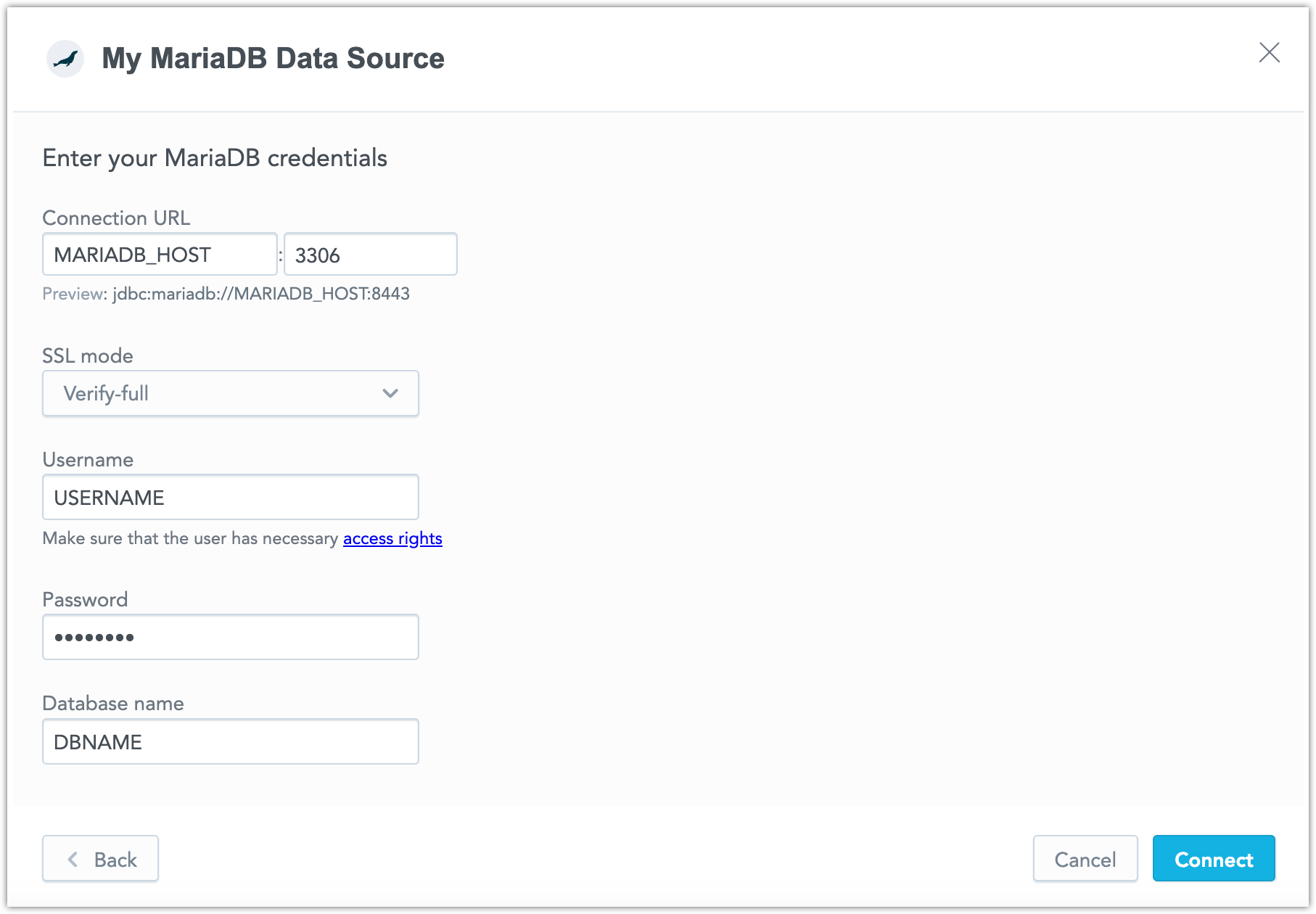Create a MariaDB Data Source
Disclaimer - Beta Feature
MariaDB data source is a beta feature. Beta features are available for users to test and provide feedback. They do not have their implementation finalized. The behavior or interface for these features may change in the future.
Do not use beta features in your production environment.
Follow these steps to connect to MariaDB and create a MariaDB data source:
Refer to Additional Information for additional performance tips and information about MariaDB feature support.
Configure User Access Rights
We recommend that you create a dedicated user and user role for integration with the GoodData platform.
Steps:
Create a user role and grant access rights:
CREATE ROLE {role_name}; GRANT SELECT ON {database_name}.* TO {role_name};Create a user and grant it the user role:
CREATE USER {user_name}; GRANT {role_name} TO {user_name};Make the user role default for the user:
ALTER USER {user_name} DEFAULT ROLE {role_name};
Create a MariaDB Data Source
Once you have configured your MariaDB user’s access rights, you can proceed to create a MariaDB data source that you can then connect to.
Steps:
On the home page switch to Data sources.
Click Connect data.
Select MariaDB.
Name your data source and fill in your MariaDB credentials and click Connect:
Click Save.
Your data source is created!
Steps:
Create a MariaDB data source with the following API call:
curl $HOST_URL/api/v1/entities/dataSources \ -H "Content-Type: application/vnd.gooddata.api+json" \ -H "Accept: application/vnd.gooddata.api+json" \ -H "Authorization: Bearer $API_TOKEN" \ -X POST \ -d '{ "data": { "type": "dataSource", "id": "<unique_id_for_the_data_source>", "attributes": { "name": "<data_source_display_name>", "url": "jdbc:mariadb:https://<MARIADB_HOST>:3306/<MARIADB_DBNAME>", "schema": "<MARIADB_DBNAME>", "type": "MARIADB", "username": "<MARIADB_USER>", "password": "<MARIADB_PASSWORD>" }}}' | jq .To confirm that the data source has been created, ensure the server returns the following response:
{ "data": { "type": "dataSource", "id": "<unique_id_for_the_data_source>", "attributes": { "name": "<data_source_display_name>", "url": "jdbc:mariadb:https://<MARIADB_HOST>:3306/<MARIADB_DBNAME>", "schema": "<MARIADB_DBNAME>", "type": "MARIADB", "username": "<MARIADB_USER>" } }, "links": { "self": "$HOST_URL/api/v1/entities/dataSources/<unique_id_for_the_data_source>" } }
Additional Information
Ensure you understand the following limitations and recommended practice.
Data Source Details
Typical JDBC URL may look like this:
jdbc:mariadb:https://<host>:<port>/<databaseName>For secured connection using SSL include
?sslMode=verify-full.Basic authentication is supported. Specify
userandpassword.GoodData uses up-to-date drivers.
Unsupported Features and Beta Limitations
GoodData does not support the following features:
- There are known issues when using SQL datasets with a MariaDB database:
- Converting a regular dataset into a SQL dataset generates an invalid query. You have to manually rewrite it to make it work.
- SQL datasets are not supported if the query contains one of these data types: TINYINT, FLOAT, DECIMAL, DOUBLE UNSIGNED.
- When converting to SQL dataset, the MySQL YEAR data type is converted to STRING.
- Filtering by boolean columns is not supported.
- The following functions are not supported:
- CORREL
- COVAR
- RSQ
- SLOPE
- INTERCEPT
- LAST_VALUE, FIRST_VALUE may use only one fact/attribute in the ORDER BY clause, string attributes are not supported.
- We do not currently support multiple hosts for MariaDB JDBC URLs.




